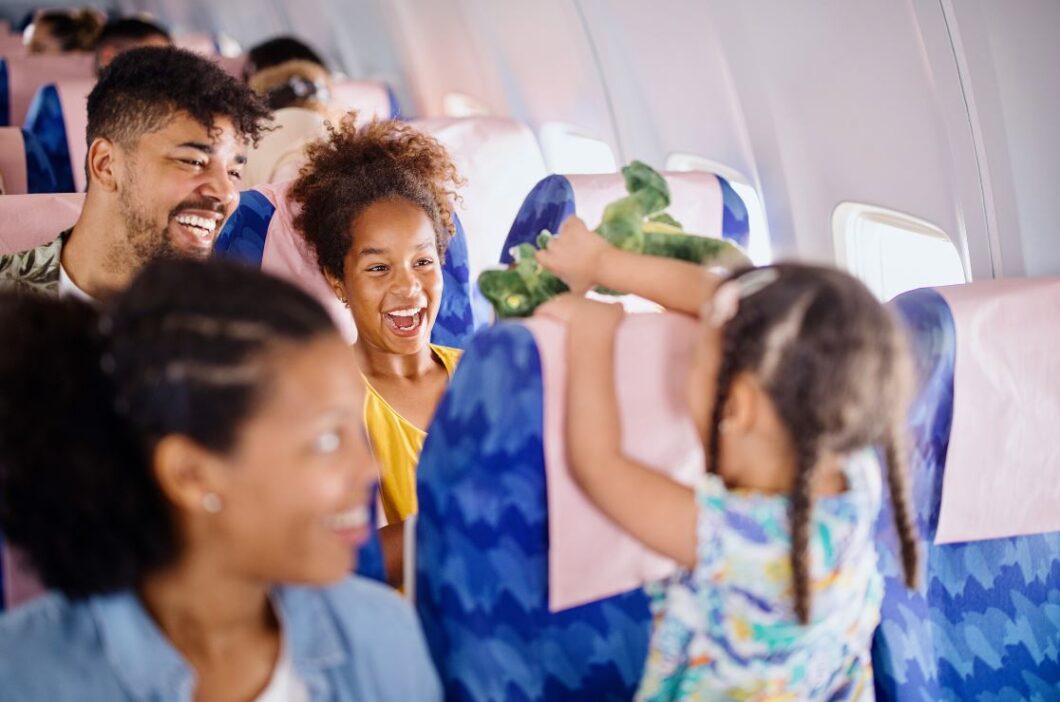It seems like there’s always a new social media post or news story about a child having a meltdown on public transport. This prompted Newsweek to pose the following question in a survey, “Should there be child-free areas on trains and airplanes?”
Whether the child is constantly kicking the seat in front of them, or wailing during a long-haul flight, it isn’t a pleasant experience for anyone. Not the child, other passengers, or the parent, for that matter.
Here’s what the survey participants said, and how others have weighed in on the topic.
Most Participants Are In Favor Of Child-Free Sections
Of the 1,500 American adults who participated in the survey, 59% agreed that child-free sections on public transport would be a good idea. 27% disagreed and the remaining 14% said they weren’t sure.
When broken down into various age groups, young adults revealed themselves to be the most supportive of the idea. 61% of those between 18 and 24 were in favor, while 69% of those between 25 and 34 gave the thumbs up.
It wasn’t just young adults who expressed approval. 49% of those between the ages of 45 and 54, and more than 50% of those 55 and above, were also in favor.
Some Parents Like The Idea, Too
If you think only child-free people are in favor of adult-only zones on public transport, think again.
One mother said to Newsweek, “As a mom traveling solo with a small child, it would be less stressful. A dedicated kids and parent area on a flight would be a real blessing—and a great USP (unique selling point) for an airline, I think.”
Another parent said, “Dedicated areas would make it much easier to tire out an energetic child before a flight. A toddler sleeping on a flight is a good thing for everyone.”
Similar Topics Have Sparked Debate Online
A simple search on Google will yield countless opinion pieces about this very topic. One thing is abundantly clear — there’s passion and conviction on both sides of the argument.
Those in favor of child-free travel zones would rather not deal with incessant screaming, crying, and wailing in an enclosed space. They don’t want young kids pulling their hair, vomiting on them, or encroaching on their space. Flying for any amount of time is stressful enough, without the added burden of constant noise. These people point out that the idea of child-free spaces isn’t novel. Therefore, child-free flights, or at least child-free areas on planes and long-haul train rides, are a good idea.
Opponents claim such measures openly discriminate against society’s most vulnerable demographic. Due to altitude changes on planes, or the abrupt jerk of a train car, it’s only natural that babies and toddlers cry. There’s also the stress of being in a new, unfamiliar environment. Lastly, young children are still working on their motor skills, and haven’t figured out how to communicate their needs yet. For these reasons, a bit of grace and understanding go a long way.
Then there are those who believe the solution lies somewhere in the middle. The parent and the person traveling without a child should be prepared for any eventuality. If the child is bored, the parent is responsible for providing toys and snacks to keep them occupied. The child-free passenger should consider headphones or earplugs in case the child throws a tantrum. There have been cases when adults traveling solo offer to entertain or hold the child until they are calm. Of course, this isn’t required. But if you’re willing to do it, and the parent agrees, it’s a kind, selfless gesture that benefits everyone.
Where do you stand on the question of child-free areas on public transport?
RELATED: Plane Passenger Annoyed By Child Kicking Her Seat While Mother Does Nothing





